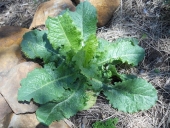

































There is nothing permanent in a culture dependent on such temporaries as civilization.
www.feralfarmagroforestry.com
 1
1




Principal - Terra Phoenix Design
http://TerraPhoenixDesign.com
















 1
1




There is nothing permanent in a culture dependent on such temporaries as civilization.
www.feralfarmagroforestry.com

















There is nothing permanent in a culture dependent on such temporaries as civilization.
www.feralfarmagroforestry.com




Previously known as "Antibubba".
 1
1




permaculture wiki: www.permies.com/permaculture




Previously known as "Antibubba".








Rob S. aka Blitz wrote:
Tagging on to what Paul said, that is basically what Sepp is doing correct?




Mt.goat wrote:
I cant really accept southwest walls,big overhangs,christmas lights,boron and nitrogen applications,and located in unique protected PNW microclimates as "able to grow outdoors in Western WA".If someone reading this lives in a nice microclimate and has the above available to them(not to mention the extra time and money to try an experiament)then go for it.If you are on a limited budget of time and money and are trying to be as self sufficiant as possible in the shortest amount of time then I gotta say forget it.How about some citrus substitutes.Some wormwoods,southernwoods(artimesia) have citrus flavors.Sumac(rhus)flowers can sub as "lemon aid".Quince has some citrus taste. And what about seaberry?Any other ideas out there?
My Blog, Natural History and Forest Gardening
www.dzonoquaswhistle.blogspot.com
"Listen everybody, to what I gotta say, there's hope for tomorrow, if we wake up today!" Ted Nugent
"Suck Marrow" Henry D Thoreau








find religion! church
kiva! hyvä! iloinen! pikkumaatila
get stung! beehives
be hospitable! host-a-hive
be antisocial! facespace




paul wheaton wrote:I also think that Sepp has some other secrets of his own.
"the qualities of these bacteria, like the heat of the sun, electricity, or the qualities of metals, are part of the storehouse of knowledge of all men. They are manifestations of the laws of nature, free to all men and reserved exclusively to none." SCOTUS, Funk Bros. Seed Co. v. Kale Inoculant Co.




 2
2












 .
.







The ultimate goal of farming is not the growing of crops, but the cultivation and perfection of human beings. - Masanobu Fukuoka




Idle dreamer








The ultimate goal of farming is not the growing of crops, but the cultivation and perfection of human beings. - Masanobu Fukuoka




www.thehappypermaculturalist.wordpress.com









 , it started going again... deep green leaves, flowers, and now it has lots of little lemons in the greenhouse, which will ripen next year.
, it started going again... deep green leaves, flowers, and now it has lots of little lemons in the greenhouse, which will ripen next year.  I think Raintree et al have yuzu for sale... may try that.
I think Raintree et al have yuzu for sale... may try that. It's time to get positive about negative thinking  -Art Donnelly
-Art Donnelly




nancy sutton wrote: Also, pineapple guava fruits, and I've got a loquat to test
I think Raintree et al have yuzu for sale... may try that.

|
You can't have everything. Where would you put it?
The new permaculture playing cards kickstarter is now live!
https://www.kickstarter.com/projects/paulwheaton/garden-cards
|



